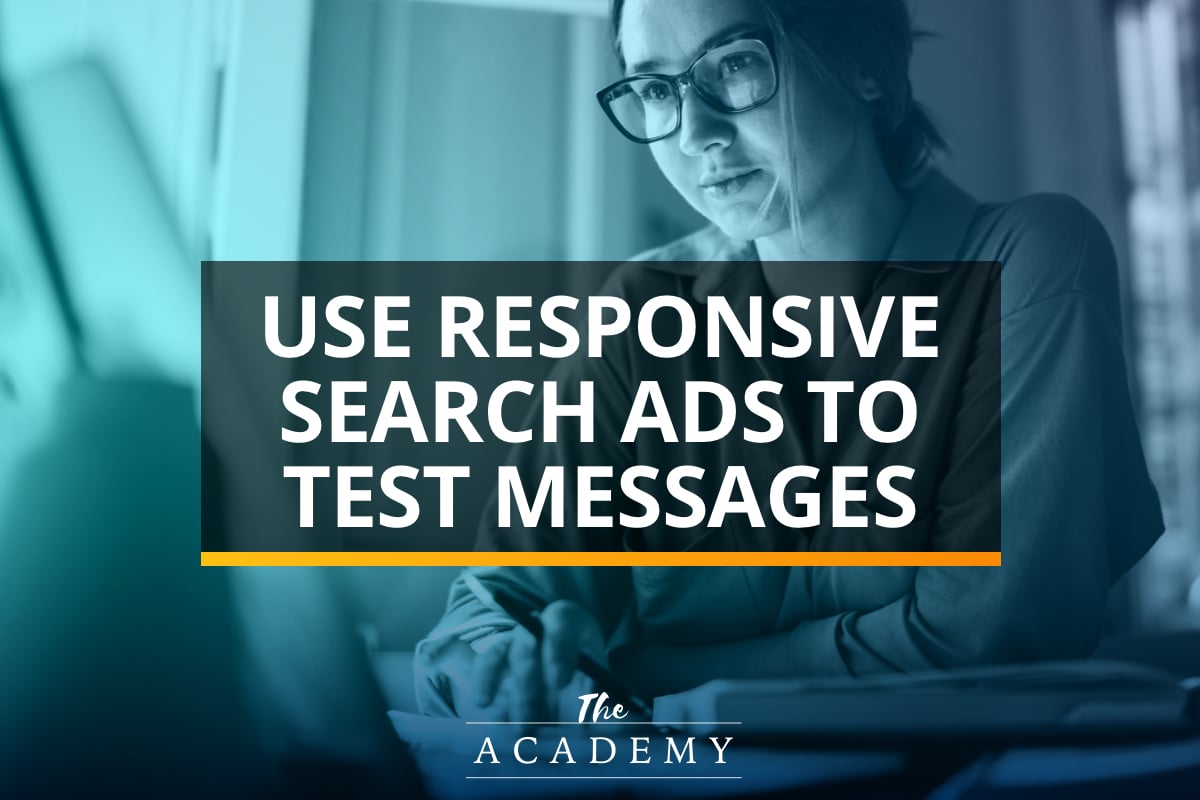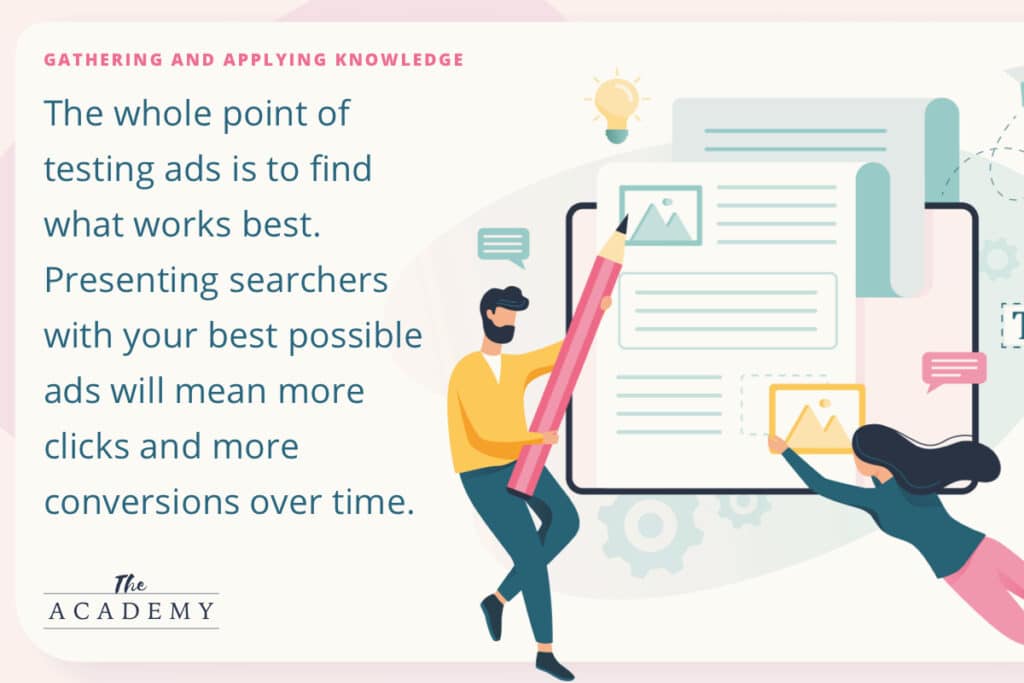
Responsive search ads have been part of the Google landscape for some time now, even if some marketers have been hesitant to jump on board. As the future of search ads moves more and more in the direction of responsive ads, it’s important for all advertisers to think about how they can use this technology to learn about their audience and deliver a more effective message.
With this article, we’d like to take an overview of responsive search ads and why these types of ads can be so powerful for testing your messages and finding exactly the right combination of words and statements to connect with your market. There is a lot to cover here, so let’s get started!
What are Responsive Search Ads?
Even if it’s a review for you, we’d like to back up for a moment and make sure we are clear on the definition of responsive search ads. While Google has made this technology available to marketers for some time, the move toward RSAs is only picking up speed and it will be important for everyone on your team to be on the same page.
To start, let’s think about what a “traditional” search ad has looked like for most of the history of the web. Typically, a marketer would write a headline and some ad copy to go under the headline. That would be the ad, and it would be displayed anytime the parameters for showing the ad were met (such as when certain search terms were entered into the search engine).
On the surface, this approach makes a lot of sense. After all, you and your team know what you are trying to sell, so it’s logical that you would pair your headlines and descriptions as you see fit, and then send those ads out into the world to see how they perform. And, to be sure, many organizations have gotten excellent results with this approach to search ads over the years.
But the power of technology is hard to match with the human mind. So, the concept of responsive search ads has been developed as a way to test and optimize ads in a way that is beyond what human marketers alone could manage. It works like this: You write a collection of headlines and a collection of ad copy descriptions and submit those as a responsive ad. They are not paired together as headline/description combinations, but rather they exist individually within this ad format.
When the ad goes live, Google will go about the process of combining various headlines and descriptions to gradually see which ones work best. Suddenly, the guesswork has been taken out of the equation, and you’ll get real-world feedback on what is working and what isn’t. Perhaps you wrote some great headlines and some excellent descriptions but may not have paired them correctly on your own for ideal results. Now, you can quickly discover which ones work nicely together, and improved outcomes should be on the horizon.
The Built-In Advantage
At this point, you might have one specific question rolling around in your head—why do I need responsive ads when I already test various ad combinations on my own? It’s certainly true that marketers are accustomed to running plenty of tests, and you should already be doing some forms of testing on your search ads. You’ve probably been able to make incremental gains on your own simply by mixing and matching your headlines and descriptions until you found something that seemed to work pretty well.
There is nothing wrong with that approach, but responsive ads just take it to a higher level. What you might be able to accomplish through manual testing is going to happen much faster when you put your trust in responsive ads to do the work for you. And, responsive ads are going to test far more combinations than you could ever do on your own. If you use Google for these ads and you fill out all of the possible headline and description fields, there will be tens of thousands of potential combinations that can be cycled while your campaign runs.
So, responsive ads are going to test more combinations than you could practically manage on your own. Even the most ambitious marketer likely won’t be able to test tens of thousands of ad combinations in a manual fashion – the time overhead required is simply too significant to overcome. Fortunately, there is no need to do that, as responsive ads can do it for you, with massive time savings and more meaningful results coming along with it.
Gathering and Applying Knowledge
As you know, the whole point of testing ads is to find what works best. If one combination of headline and description outperforms the others, it only makes sense to use that ad more often. Presenting searchers with your best possible ads will mean more clicks and more conversions over time. This is not a hard concept to grasp and consistently working toward higher and higher levels of performance will make your ad campaigns more profitable.

Again here, we see the power of automating the testing process coming into focus. If you were doing manual tests, it would take a lot of time to compile results, organize them in a meaningful way, and draw conclusions. With responsive ads, that all becomes automated and the takeaways become obvious. Ultimately, you will not only have more knowledge at your fingertips thanks to the scale of responsive ads testing, but you will also have the ability to apply what you have learned more effectively.
- Automated optimization. As your campaign moves along, the ad combinations that are working best will gradually be used more and more frequently. That’s the goal in the end, after all, so it only makes sense that the system would be designed to make that happen. The speed with which your ads are tuned to meet the preferences of the searchers will depend on the volume of your search terms and your level of ad spend. The more times your ads are displayed each day, the faster the system can learn what works and what doesn’t.
- Valuable segmentation. So far, we’ve been talking about learning which ads “work best” through responsive ads, but that’s a bit of a simplification. There likely won’t be one single ad combination that works best in all situations, as searchers are not all the same. One ad combination will likely work best for a given search term, but another term may be optimized using a different combination. This is again where automating this process makes all the difference. Your ads will start to be shown in specific combinations depending on the exact search term used, and that’s only one type of segmentation that is at play. Also, the ads may be altered by things like browsing history on the part of the searcher, the type of device they are using, and more.
- A bigger reach. One of the challenges that marketers sometimes face when building search ad campaigns is finding enough search volume for the terms they want to target. You likely have some core searches that you know are relevant to your business, but those might not add up to much search volume—meaning your ads don’t get a lot of impressions, and the campaign is slow to pick up traction. With responsive ads, you can expand your reach by writing a lot of headlines and descriptions and being relevant to more searches. Expanding reach just by adding more keywords is not always a good thing, as it can increase your spend without delivering great results, but you’ll be doing so with the optimizing power of responsive ads on your side.
When it comes down to it, responsive ads technology is going to be able to learn more than you could ever learn about your own campaigns, and it will also be able to more easily take action on that knowledge. Marketers from generations gone by could only dream of having the testing capabilities that you now have at your fingertips, so it would be a shame to let it go to waste.
Remember Who Your Ads Are Serving
It’s easy to fall into the trap of just creating ads that you hope will make the Google algorithm happy. But it’s not that algorithm that is going to be buying from your business. In the end, the goal of any ad is to win new customers, and those customers are real people—so focus on them first and foremost. This is similar to advice you may have heard in terms of SEO content marketing. Yes, you need to include the right keywords on your pages if you hope to rank, but you still have to write content that has value for actual humans who read the content. The same concept applies here with ads.
In this way, you need to remember to stick with basic marketing fundamentals, even in a high-tech age. Yes, there are things you can do with responsive ads that simply were not possible in years gone by, but that doesn’t change the basics of what marketers need to do in order to garner attention and make sales. Ultimately, the job of a business has not changed throughout history, and it isn’t going to change anytime soon. That goal is to solve problems. Every business solves problems, and your task as a marketer is to relate to your customers’ problems and explain how your product or service is the solution they’ve been seeking. Responsive ads or otherwise, communicating that fundamental message is always the goal.
Hopefully this discussion has helped bring into focus what responsive ads can do for you and how they can help you effectively test messages that will work to drive your business forward. It can be scary giving up some measure of control when trusting a newer technology, but there is incredible power to be accessed once you lean into this type of advertising. By writing great headlines and great descriptions, and letting the responsive ads system do the work of pairing them together and testing the results, you’ll wind up in a great place with your campaign over time. Good luck!
Most Popular Articles

Seeing Favicons in Your Google Search Results? Here’s Why…
Have you noticed anything different in your Google Search results lately? Google added tiny favicon icons to its organic search results in January. It was…

Business Growth and Digital Marketing News & Tips 11-17-24
Are you encouraging and rewarding innovation? Lee Cockerell is the former Executive Vice President of Operations at Walt Disney World. A lover of traditional red…

Business Growth and Digital Marketing News & Tips 11-27-24
A culture of gratitude "Feeling gratitude and not expressing it is like wrapping a present and not giving it." – William Arthur Ward Beyond being…








